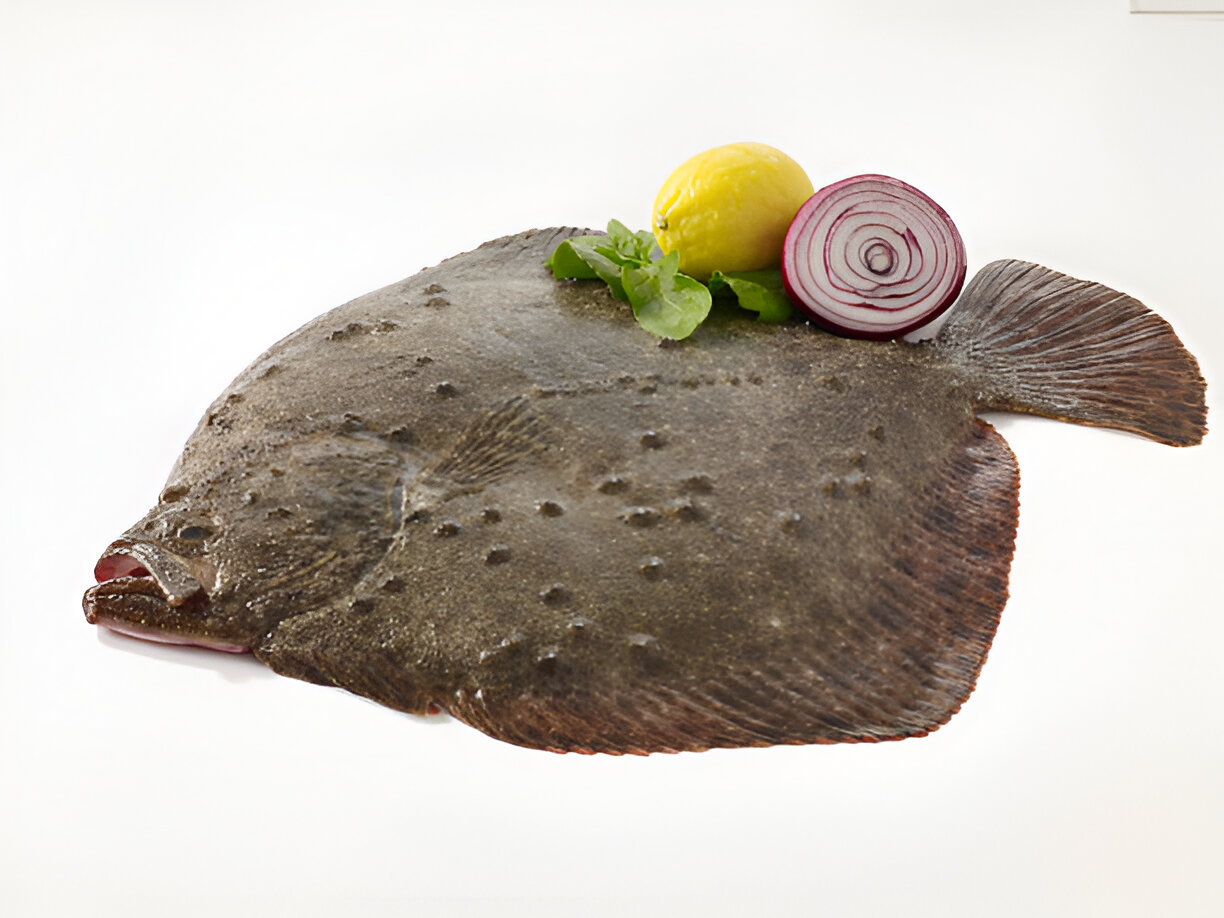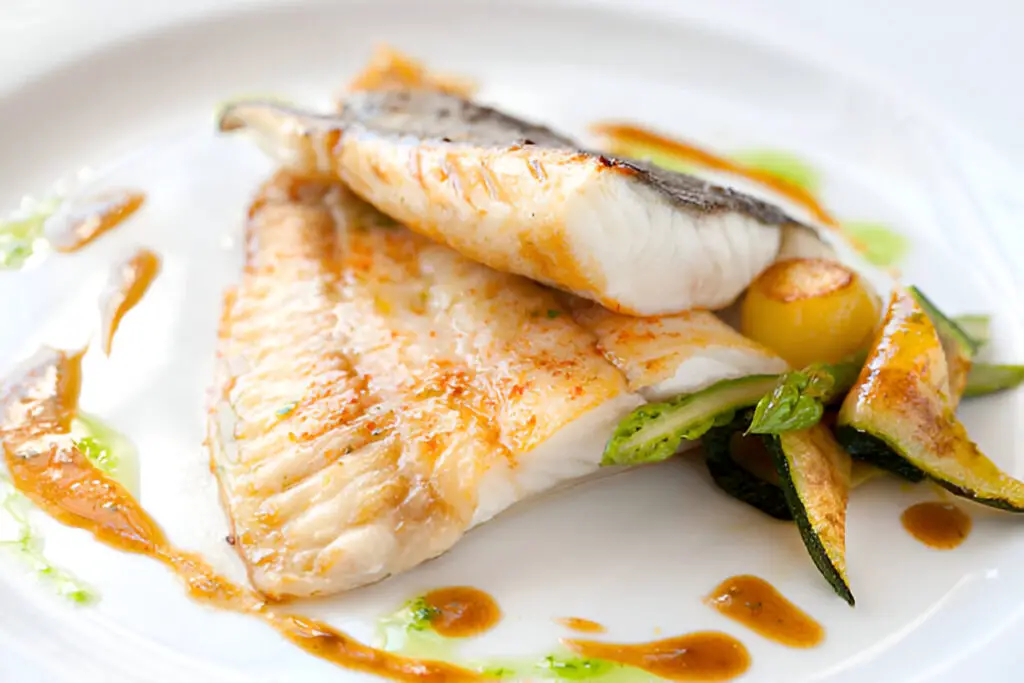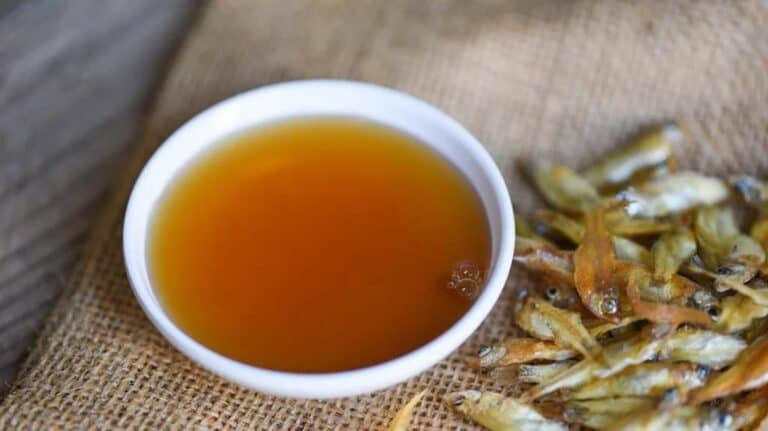What Does Turbot Taste Like? Is it a Strong-Tasting Fish?

If you’re like me and consider yourself a seafood enthusiast, you’ve probably come across turbot on a high-end restaurant menu or seen it featured in a cooking show. Turbot has a reputation for being a prized catch, and for good reason. But what exactly does turbot taste like? Is it mild, strong, or something in between?
Let me walk you through its unique flavor, how it stacks up against other fish, and why chefs and foodies alike hold it in such high regard.
What Is Turbot, Anyway?

Before we dive into the taste, let’s talk about what turbot actually is. Turbot (pronounced tur-bət) is a flatfish that swims in the cold waters of the North Atlantic and the Mediterranean.
It’s a bottom-dweller, similar to halibut or sole, but with a richer texture and flavor profile. Its firm, white flesh makes it a go-to choice for chefs who want a fish that delivers both subtlety and decadence.
Here’s a quick snapshot of turbot:
| Feature | Details |
| Type | Flatfish |
| Texture | Firm, delicate |
| Flavor | Mild, slightly briny |
| Popular Preparation | Roasting, grilling, poaching |
| Common Comparisons | Halibut, Dover sole |
Now that you know the basics, let’s get into the good stuff—what it actually tastes like.
What Does Turbot Taste Like?
Turbot has a mild yet rich flavor that hits the sweet spot between subtle and satisfying. It’s not overly fishy, which makes it perfect for people who shy away from stronger-tasting seafood. The taste is clean, slightly briny (think of a fresh ocean breeze), and has a faint nuttiness that sets it apart from other white fish.
Here’s how I’d describe the taste of turbot:
- Clean and Fresh: It doesn’t have a muddy or oily taste like some bottom-feeding fish.
- Mild Brininess: You can taste the ocean, but it’s subtle and pleasant.
- Slightly Sweet: Like halibut, turbot has a faint natural sweetness that complements its rich texture.
If you’ve ever enjoyed Dover sole, halibut, or flounder, you’re in for a treat. But turbot edges them out with its perfectly balanced flavor.
Is Turbot a Strong-Tasting Fish?
The short answer? Not at all. Turbot is not a strong-tasting fish. It’s one of the mildest, most delicate options you can put on a plate. If you have a preference for fish with subtle flavors, turbot is the perfect choice.
That said, its flavor is far from boring. Turbot’s rich, meaty texture gives it a luxurious quality that sets it apart from flakier fish like cod or tilapia. Think of it as the filet mignon of the sea—mild but decadent, simple yet refined.
If you’re worried about a fishy aftertaste, turbot has none. When cooked properly, it’s buttery, delicate, and melts in your mouth.
How Does Turbot Compare to Other Fish?
To give you a clearer idea of turbot’s flavor, let’s stack it up against some well-known fish:
| Fish | Flavor | Texture |
| Turbot | Mild, slightly briny | Firm, meaty, delicate |
| Halibut | Mild, faintly sweet | Firm, flaky |
| Dover Sole | Very mild, buttery | Delicate, smooth |
| Flounder | Mild, slightly sweet | Soft, flaky |
| Salmon | Strong, oily, rich | Firm, oily |
As you can see, turbot shares a mild flavor profile with halibut and Dover sole. It’s perfect for those who enjoy white fish without overpowering flavors.
Texture Matters: How Turbot Feels on the Palate
Turbot, known for its delicate yet firm texture, offers a unique mouthfeel that sets it apart from other fish. Its flesh is tender but not overly flaky, creating a satisfying bite that holds together well without being tough. The firm texture is perfect for grilling or pan-searing, where it retains its shape while still providing a tender bite.
When raw, turbot has a smooth and slightly elastic texture. Its flesh feels almost velvety, offering a clean, fresh sensation on the palate. As the fish cooks, the texture transforms—becoming more tender and moist, but still with a firm backbone. The contrast between the raw and cooked forms highlights its versatility, as it adapts beautifully to various cooking methods, from poaching to baking.
Raw vs. Cooked Texture Comparison
| Texture State | Raw | Cooked |
| Firmness | Slightly elastic, smooth | Firm, yet tender |
| Moisture | Wet, but not overly juicy | Moist, with a slightly flaky exterior |
| Mouthfeel | Velvety, clean | Soft and tender, holds together well |
Turbot’s texture makes it a standout choice for many, whether you’re enjoying it raw in a delicate ceviche or savoring a perfectly seared fillet.
Best Ways to Cook Turbot to Enhance Its Flavor
One of the reasons turbot is so popular is because of its versatility in the kitchen. It’s a blank canvas for flavors, and its firm texture holds up beautifully to different cooking methods. Here are my favorite ways to prepare turbot:
- Roasted Turbot: Roasting brings out its natural sweetness. Pair it with herbs like thyme, rosemary, and a squeeze of fresh lemon.
- Grilled Turbot: Grilling adds a slightly smoky flavor that complements its briny notes.
- Poached Turbot: Poaching in butter or a light broth keeps the fish tender and locks in moisture.
- Pan-Seared Turbot: Searing gives it a golden, crispy edge while keeping the inside buttery soft.
| Method | Key Benefits |
| Roasting | Enhances natural sweetness, easy prep |
| Grilling | Adds smokiness, perfect for summer |
| Poaching | Locks in moisture, rich and tender |
| Pan-Searing | Crispy outside, soft and buttery inside |
The trick with turbot is not to overdo it. Its delicate flavor shines best with simple seasonings like salt, pepper, fresh herbs, and citrus. Let the fish speak for itself!
| Check out: Does Fish Sauce Need to Be Refrigerated? |
Why Do Chefs Love Turbot?
Chefs adore turbot because it’s a showstopper on the plate. Its rich texture and mild flavor make it a perfect centerpiece for a gourmet meal. Plus, it’s versatile enough to take on different flavors without losing its identity. Whether it’s served whole, filleted, or in a delicate sauce, turbot always impresses.
Here’s what sets it apart:
- Visual Appeal: Turbot fillets are thick, white, and pristine—ideal for elegant presentations.
- Texture: Its firmness makes it easy to work with and perfect for various cooking methods.
- Flavor Compatibility: Turbot pairs beautifully with citrus, herbs, butter, and even light spices.
If you ever get the chance to order turbot at a restaurant, go for it. It’s a culinary experience worth savoring.
| Related: Can You Enjoy Turbot Sushi-Style? |
Final Thoughts: Should You Try Turbot?
Turbot is the perfect choice if you’re seeking a mild, luxurious fish that is packed with flavor without overwhelming your taste buds. It’s not strong, not fishy, and its tender, buttery texture makes it a delight to eat. Whether you roast it, grill it, or poach it, turbot delivers a restaurant-quality meal that feels indulgent but tastes light and fresh.
So, next time you see turbot on the menu or at the fish market, give it a try. Trust me—you’ll taste why chefs call it one of the finest fish in the sea.






